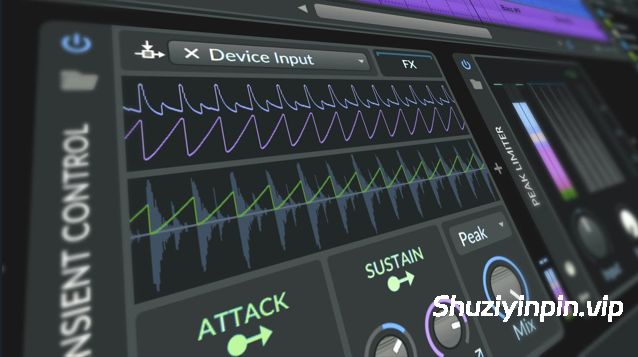
FANTASTiC | 08 August 2025 | 1 MB
在本 Bitwig Studio 教程中,我将演示如何从头开始创建 Trance 音轨,而无需使用任何预设、样本或循环。以下是该过程的简要分解:
速度和基础知识:
•将 BPM 设置为 130-135 左右,适合 Trance 但不如 Hardcore 子流派那么快。
•使用 Bitwig 的 e-kick 在 G 零调音下以简单的底鼓模式开始,根据需要调整音高。
鼓结构:
•添加小军鼓或拍手鼓和高镲,利用力度强调不合拍的打击,并应用表情调制器进行动态控制。
•在鼓轨道上使用峰值限制器和均衡器以获得干净的混音。
贝斯线:
•使用单音合成器制作贝斯,为简单起见,制作一个 A 小调的模式,与键盘上从 A 开始的所有白键对齐。
•应用轻微混响以增强空间感。
主音和长音:
•用锯齿波创建主音,使用同音效果增加厚度,并使用 LP-1 滤波器塑造音调。
•引入简单的旋律模式,并应用卷积混响增加深度。
自动化和效果:
•使用混音级别和滤波器设置等参数的自动化功能逐渐引入元素。
•尝试使用移频器获得独特的纹理变化。
和弦进行:
使用带有同音的锯齿波和 LP 滤波器构建和弦层,强调小和弦及其变奏。
最后的润色:
•分组音轨进行集体处理,例如将其侧链到底鼓以保持节奏连贯性。
•使用额外的调制和效果(例如扫频和噪声)增强编曲,以增加过渡元素。
混音和母带制作:
•讨论初步的混音和母带制作步骤,指出虽然设置很简单,但它为专业的恍惚音乐奠定了基础,可能需要更详细的声音设计和母带制作调整才能符合当前的流派标准。
本教程展示了如何在 Bitwig Studio 中构建恍惚音轨,强调无需外部样本或插件的内置制作技术。
In this Bitwig Studio tutorial, I demonstrate how to create a trance track from scratch, without using any presets, samples, or loops. Here’s a concise breakdown of the process:
Tempo and Basics:
•Set the BPM to around 130-135, suitable for trance but not as fast as hardcore subgenres.
•Initiate with a simple kick drum pattern using Bitwig’s e-kick at G zero tuning, adjusting pitch as necessary.
Drum Construction:
•Add a snare or clap and a high hat, utilizing velocity to emphasize off-beat hits and applying an expression modulator for dynamic control.
•Employ peak limiters and an EQ on the drum track for clean mixing.
Bassline:
•Use a monophonic synthesizer for the bass, crafting a pattern in A minor for simplicity, which aligns with all white keys starting from A on the keyboard.
•Apply a light reverb for spatial enhancement.
Lead and Pads:
•Create a lead with a saw wave, unison effect for thickness, and LP-1 filter for tone shaping.
•Introduce simple melodic patterns and apply a convolution reverb for depth.
Automation and Effects:
•Gradually introduce elements using automation on parameters like mix levels and filter settings.
•Experiment with a frequency shifter for unique textural changes.
Chord Progressions:
Construct chord layers using a saw wave with unison and an LP filter, emphasizing minor chords and their variations.
Final Touches:
•Group tracks for collective processing, such as side-chaining to the kick for rhythmic coherence.
•Enhance the arrangement with additional modulation and effects like sweeps and noise for transitional elements.
Mix and Master:
•Discuss the preliminary mixing and mastering steps, indicating that while the setup is basic, it lays the groundwork for a professional trance track that may require more detailed sound design and mastering tweaks to match current genre standards.
This tutorial showcases how to build a trance track in Bitwig Studio, emphasizing in-the-box production techniques without external samples or plugins.
FANTASTiC

![[圣诞氛围:雪橇铃声音效FX采样] Nbeats Christmas Ambiance Sleigh Bell Sound Effects [FLAC](93.75MB)](https://www.shuziyinpin.vip/wp-content/uploads/2025/12/Sleigh-Bell-Sound-Effects.png)
![[终极鼓组制作工具包] Retro Loops Everything Drums (One-Shots and Drum Breaks) [WAV](7.21GB)](https://www.shuziyinpin.vip/wp-content/uploads/2025/12/27122550_retro-loops-everything-drums-one-shots-and-drum-breaks.jpg)
![[Trap陷阱采样Zenology预置Kontakt音源] Oneryyley Technorap [WAV, KONTAKT](8.63GB)](https://www.shuziyinpin.vip/wp-content/uploads/2025/12/Oneryyley-Technorap-.png)
![[灵魂陷阱泰克诺舞曲采样] ALPHA SAMPLES Microhouse Rominimal Deeptech Production Loops and Sounds Royaltyfree Sample Pack Vol.1 [WAV](142.83MB)](https://www.shuziyinpin.vip/wp-content/uploads/2025/12/alpha-samples-microhouse-rominimal-deeptech-production-loops-and-sounds-royaltyfree-sample-pack-vol.1.png)
![[电影机械时钟节奏采样音源]Silence+Other Sounds Mystery Box 3 [WAV, KONTAKT](353.88MB)](https://www.shuziyinpin.vip/wp-content/uploads/2025/12/26122518_silenceother-sounds-mystery-box-3.png)
![[惊悚影视水琴破碎提琴老钢琴金属刮擦弓弦锣钹采样音源]Silence+Other Sounds Mystery Box [WAV, KONTAKT](842MB)](https://www.shuziyinpin.vip/wp-content/uploads/2025/12/18072157_silenceother-sounds-mystery-box-bowed-experiments.png)

评论0